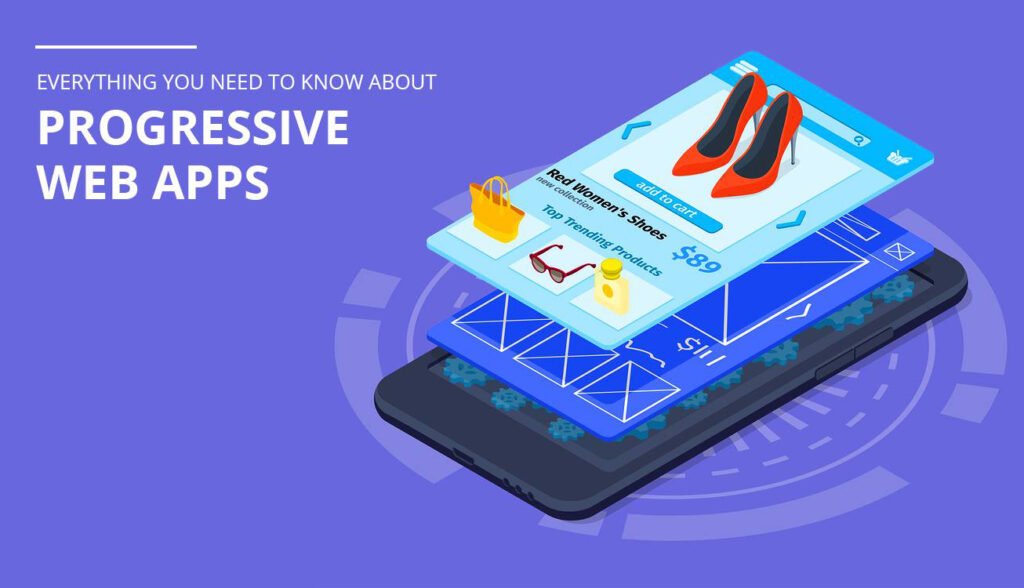Contact Us
Email: info@mohitdesigns.com
Mobile: +91-9718991639
Contact Us
Email: info@mohitdesigns.com
Mobile: +91-9718991639


Building a Progressive Web App (PWA) is an exciting journey for developers looking to create fast, reliable, and engaging web experiences. PWAs blend the best of websites and mobile apps, offering offline functionality, push notifications, and improved performance. In this tutorial, we’ll walk you through the process of creating your first Progressive Web App step-by-step.

A Progressive Web App is a web application that leverages modern web technologies to deliver an app-like experience to users. PWAs are:
With these features, PWAs are transforming how users interact with web applications.
Before diving into the technical details, let’s explore why PWAs are worth building:
To start, create a folder for your project and structure it as follows:
my-pwa/
├── index.html
├── style.css
├── app.js
├── manifest.json
└── sw.jsLet’s start with the index.html:
<!DOCTYPE html>
<html lang="en">
<head>
<meta charset="UTF-8">
<meta name="viewport" content="width=device-width, initial-scale=1.0">
<title>My First Progressive Web App</title>
<link rel="manifest" href="manifest.json">
<link rel="stylesheet" href="style.css">
</head>
<body>
<h1>Welcome to My PWA!</h1>
<p>This is your first step toward building a Progressive Web App.</p>
<script src="app.js"></script>
</body>
</html>This file serves as the entry point and includes links to the manifest, styles, and scripts.
The manifest.json file makes your app installable. Here’s a basic example:
{
"name": "My First PWA",
"short_name": "PWA",
"start_url": "/",
"display": "standalone",
"background_color": "#ffffff",
"theme_color": "#0000ff",
"icons": [
{
"src": "icon-192x192.png",
"sizes": "192x192",
"type": "image/png"
},
{
"src": "icon-512x512.png",
"sizes": "512x512",
"type": "image/png"
}
]
}Service workers are the backbone of a PWA, enabling caching and offline functionality. Create a sw.js file:
self.addEventListener('install', (event) => {
event.waitUntil(
caches.open('pwa-cache').then((cache) => {
return cache.addAll([
'/',
'/index.html',
'/style.css',
'/app.js',
'/icon-192x192.png',
'/icon-512x512.png'
]);
})
);
});
self.addEventListener('fetch', (event) => {
event.respondWith(
caches.match(event.request).then((response) => {
return response || fetch(event.request);
})
);
});Now, register the service worker in your app.js file:
if ('serviceWorker' in navigator) {
navigator.serviceWorker.register('/sw.js')
.then((registration) => {
console.log('Service Worker registered with scope:', registration.scope);
})
.catch((error) => {
console.error('Service Worker registration failed:', error);
});
}This snippet ensures the service worker is active and ready.
Use CSS to enhance your app’s appearance. Create a style.css file:
body {
font-family: Arial, sans-serif;
text-align: center;
padding: 20px;
}
h1 {
color: #333;
}
p {
color: #666;
}To test your Progressive Web App:
npx http-server works well).For a PWA to be installable, ensure:
manifest.json.Once you’ve mastered the basics, consider adding:
Building a Progressive Web App might seem daunting initially, but by following these steps, you’ve created a fast, reliable, and installable web app! PWAs open up a world of possibilities, offering engaging experiences to users and reducing development effort for creators.
So, what are you waiting for? Start experimenting, and let your creativity shine. Share your first PWA with the world, and keep exploring advanced features to enhance its functionality.
Remember, the future of web development lies in PWAs—and now, you’re part of it!
